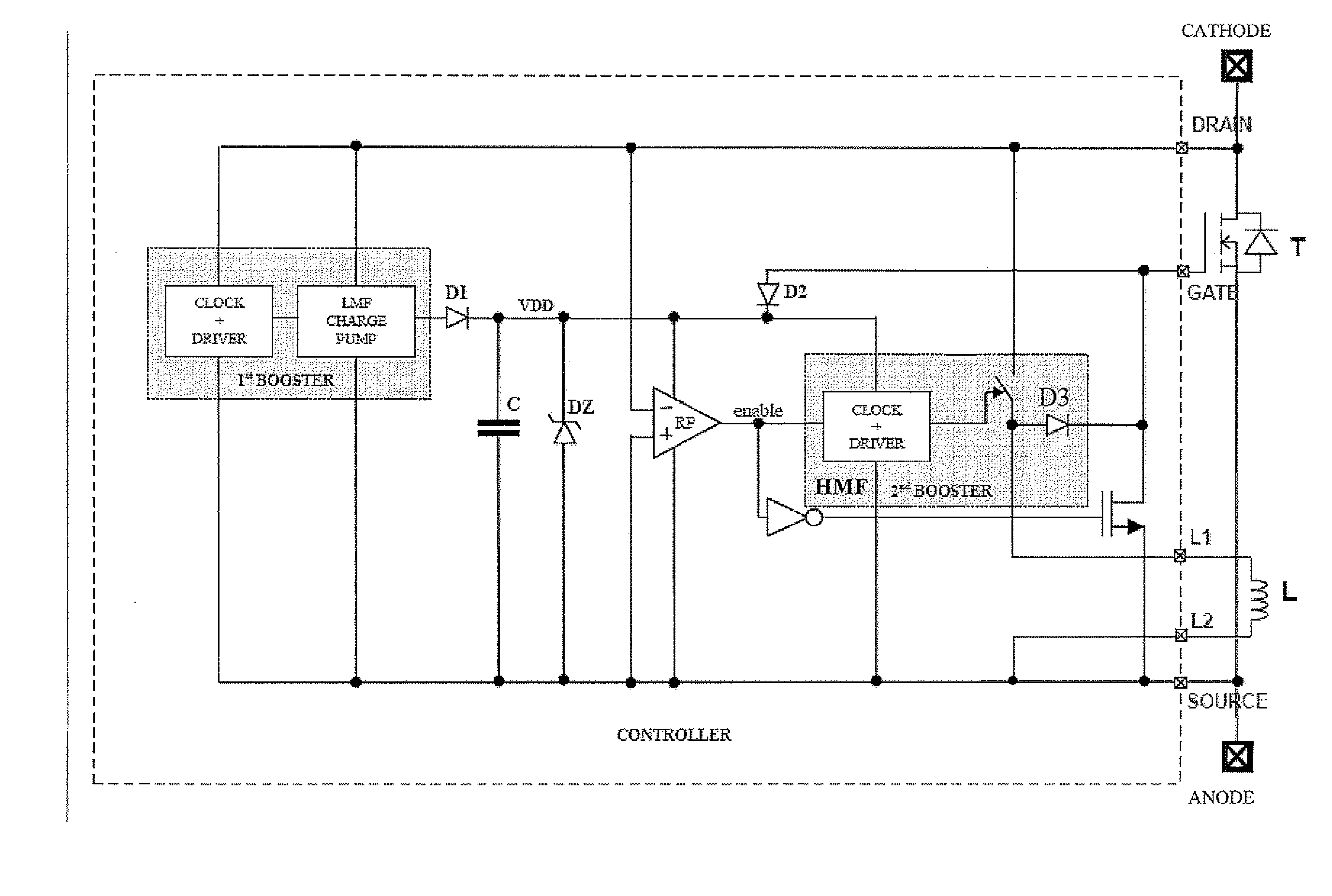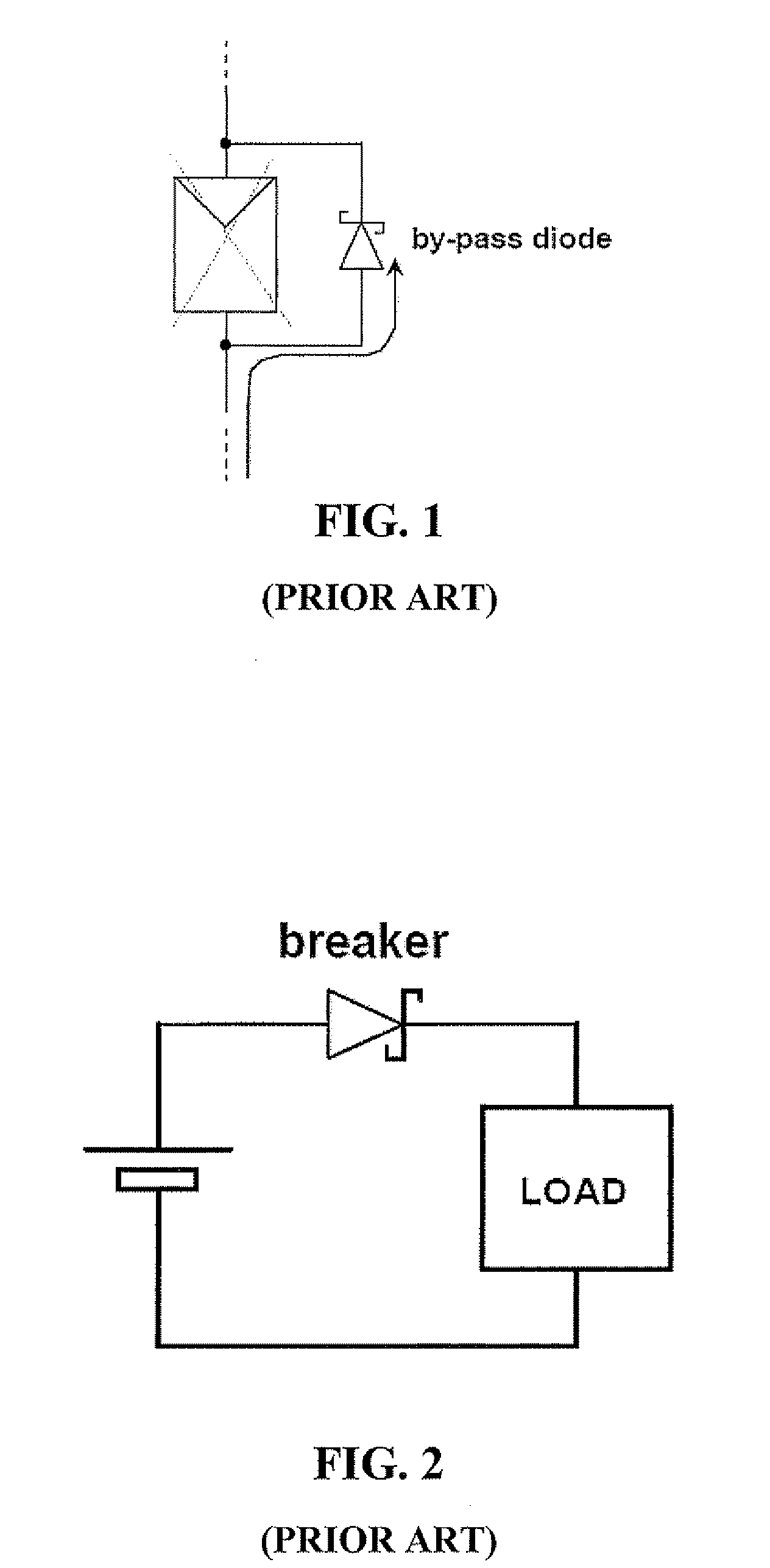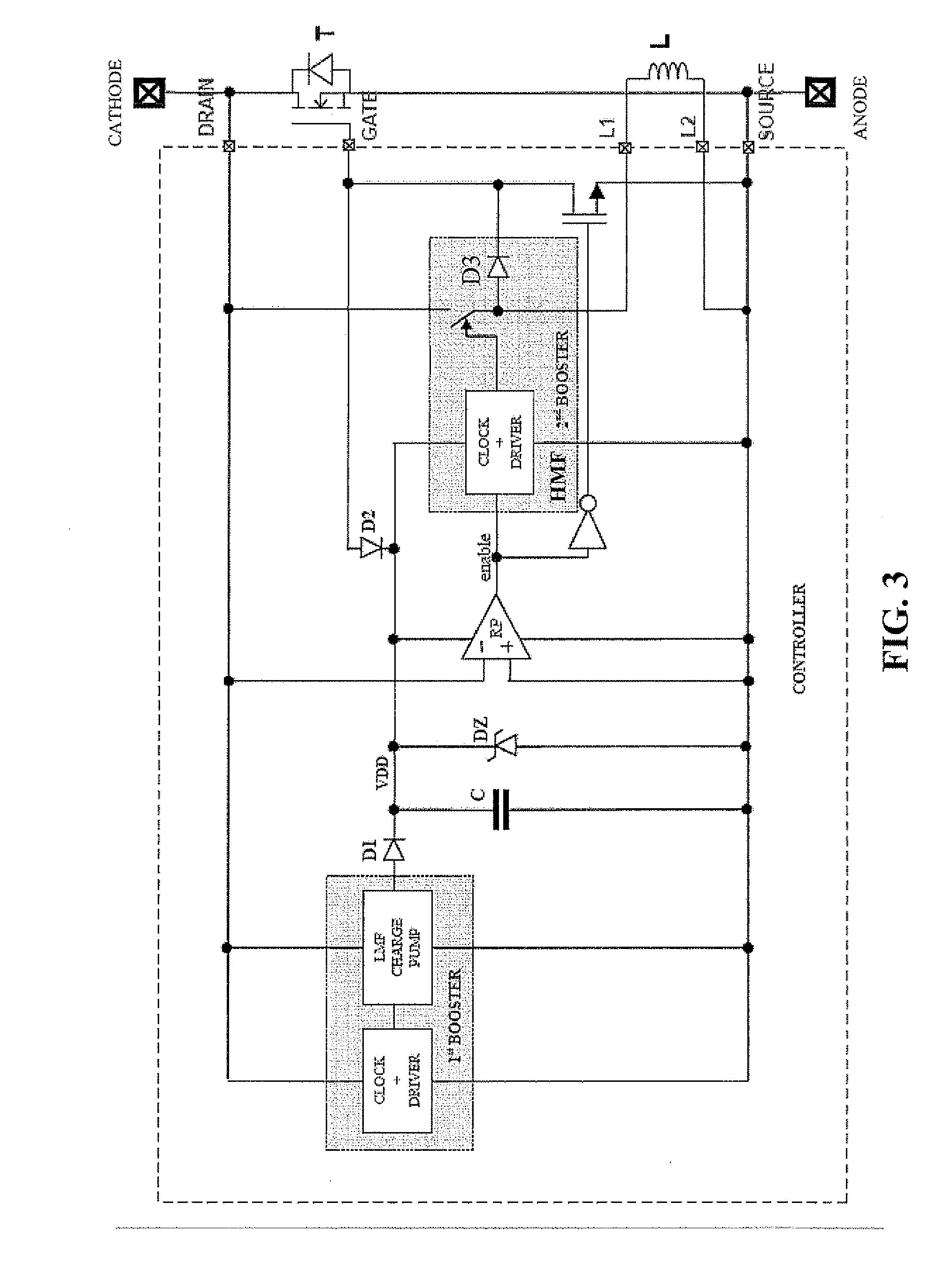Low on-resistance mosfet implemented, by-pass diode or circuit breaker and related self-powering and control circuit
a low-resistance, circuit-breaker technology, applied in the direction of photovoltaic energy generation, dc network circuit arrangement, electrical equipment, etc., can solve the problem of significant power loss in the conducting by-pass diode, the possibility of inadvertent reverse of the supply battery polarity, and the breakdown of the shadowed cells
- Summary
- Abstract
- Description
- Claims
- Application Information
AI Technical Summary
Benefits of technology
Problems solved by technology
Method used
Image
Examples
Embodiment Construction
[0021]An exemplary embodiment of the by-pass diode system-in-package device of this disclosure is depicted in FIG. 3. In the illustrated embodiment, the power switching component T is in the form of a discrete N-channel MOSFET power transistor T, the current terminals of which are connected, respectively, to anode and cathode leads of an external connection of the system-in-package device.
[0022]The state of the switching device T is controlled by an integrated control circuit contained inside the broken line perimeter that uses a discrete inductor L connected to the pads L1 and L2 of the integrated circuit to the other connection pads of which connect the source, the drain and the gate of the controlled discrete N-channel MOSFET.
[0023]A start-up voltage booster, 11 commonly including a common drive clock phases generating circuit and driver stage of a low multiplication factor charge pump circuit, that eventually becomes supplied by a negative drain / source voltage difference on the ...
PUM
 Login to View More
Login to View More Abstract
Description
Claims
Application Information
 Login to View More
Login to View More - R&D
- Intellectual Property
- Life Sciences
- Materials
- Tech Scout
- Unparalleled Data Quality
- Higher Quality Content
- 60% Fewer Hallucinations
Browse by: Latest US Patents, China's latest patents, Technical Efficacy Thesaurus, Application Domain, Technology Topic, Popular Technical Reports.
© 2025 PatSnap. All rights reserved.Legal|Privacy policy|Modern Slavery Act Transparency Statement|Sitemap|About US| Contact US: help@patsnap.com



